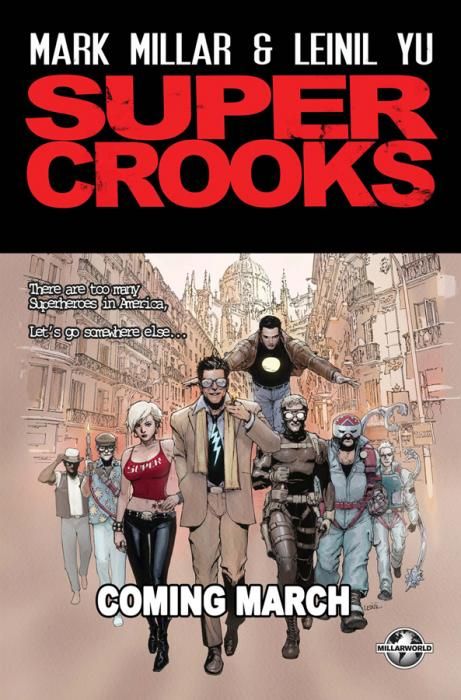The concept of people with super powers existing in a more realistic setting has swiftly become so ubiquitous it warrants the inauguration of a genre all its own. "Super Crooks" #1 is yet another pass at this premise, but since the idea itself (even when explained in Mark Millar's editorial at the close of the issue) fails to advance beyond a simple joke, the plotting of super heroes and villains in a world like our own actually strains our suspension of disbelief even further than traditional superhero comics do. The notion of a "real world" setting for superheroes in "Super Crooks" #1 seems to mean the characters happen to curse and hit villains harder -- aside from that, "Super Crooks" #1 is predictable business-as-usual.
As explained in the back-matter of the issue and in various promotional videos leading up to "Super Crooks" #1, the story is about super-powered criminals travelling to Spain in order to avoid the hundreds of superheroes in the United States. Why Spain? "Well, have you ever heard of Captain Spain?" -- both the main character of "Super Crooks" and Millar himself ask this question. By focusing on this premise -- that there are hundreds of superheroes in the United States but none in Europe -- Millar actually undermines the credibility of his own plot. If we suspend our disbelief enough to buy into a story where super powers are so common even the waitress serving at your local diner is a powerful psychic, why isn't there a Captain Spain? Each business and character showcased within "Super Crooks" #1 is blessed with supernatural powers of one sort or another and yet we are to understand that, for whatever reason, this phenomenon has remained localized to one country.
The counter-argument to the above is obvious: because superhero comic books in print are primarily an American phenomenon in the real world, Millar is presenting that publication trend in the world of the comics themselves. Obviously, the title characters are able to head to Europe as the plot unfolds. Are we to believe they are the only people who ever had this notion? The result is a storyline thematically related to what superheroes mean in our world, but fails to establish what they mean in the world we find in the pages of "Super Crooks." Millar has a lot of work to do in the coming issues to win back a sense of logic within the plot.
On a happier note, Leinil Yu's artwork is just as detailed and clean as his fans have come to expect. The amount of craft and design in each panel is consistently impressive and deserving of a plot and concept to match. At one point a character is viciously murdered and the scene is set by Yu in a broad, cinematic manner including key details like the veins in a man's arm or the cigar smoke flowing from his nostrils bringing the reader directly into the scene.
"Super Crooks" #1 is the first issue of a series presenting no likable characters and nothing we haven't seen before several times over. The cover presents us with many more characters than are introduced to us in "Super Crooks" #1, so we can hold out hope those future introductions will be more nuanced and intriguing than the ones we find within. As for the first issue, what we find remains bland and uninspired for an inauspicious start to the series.

